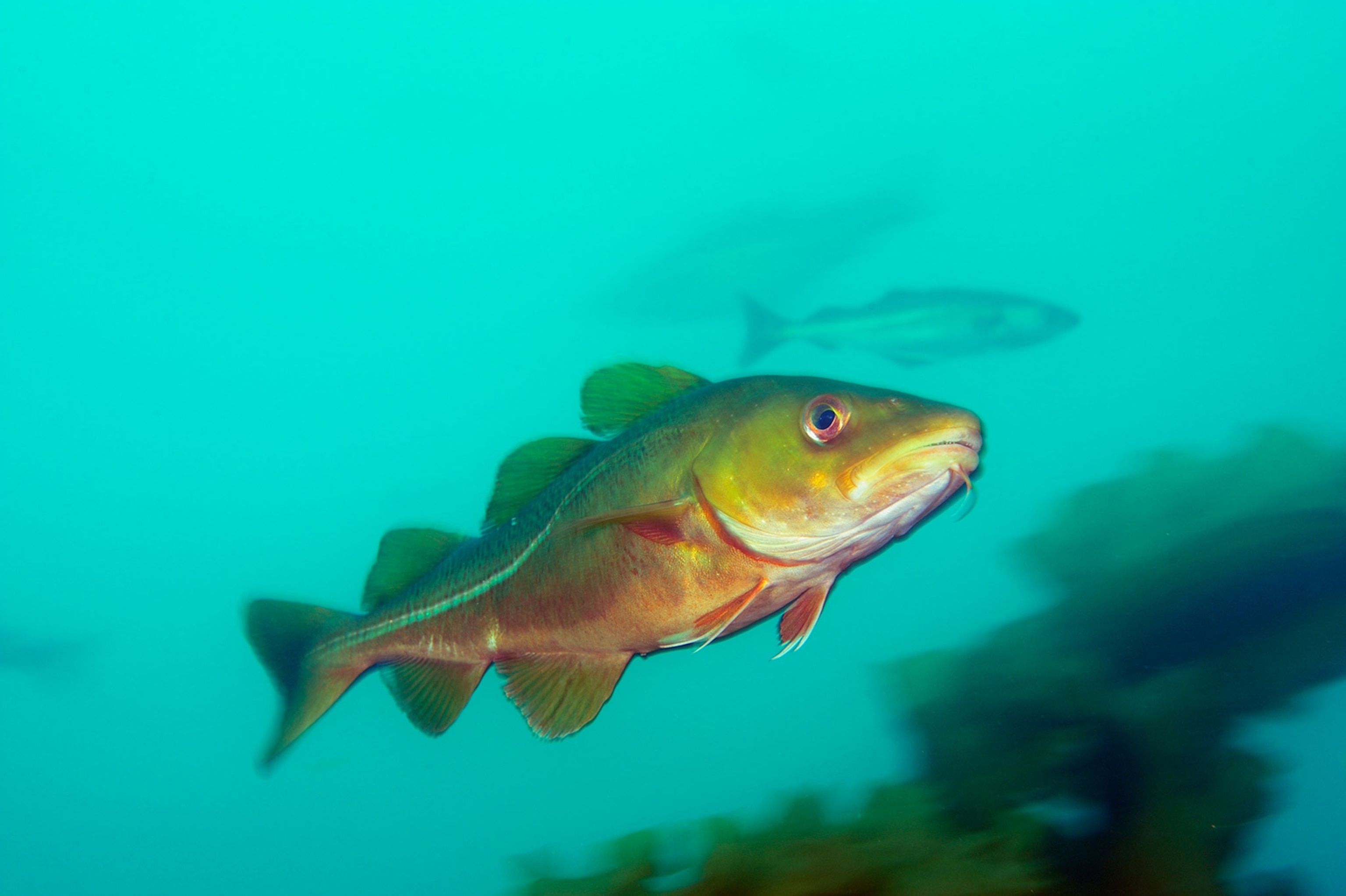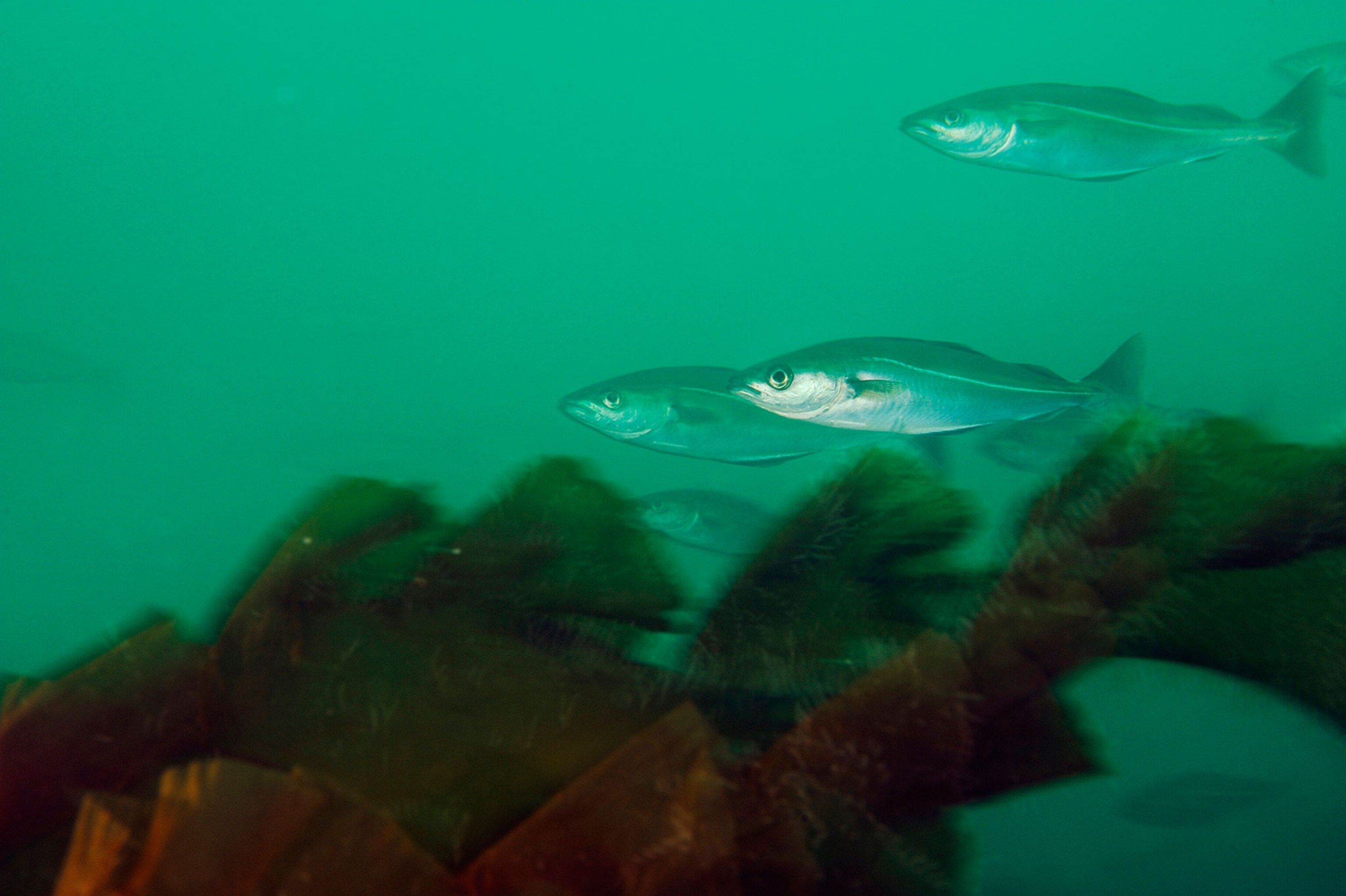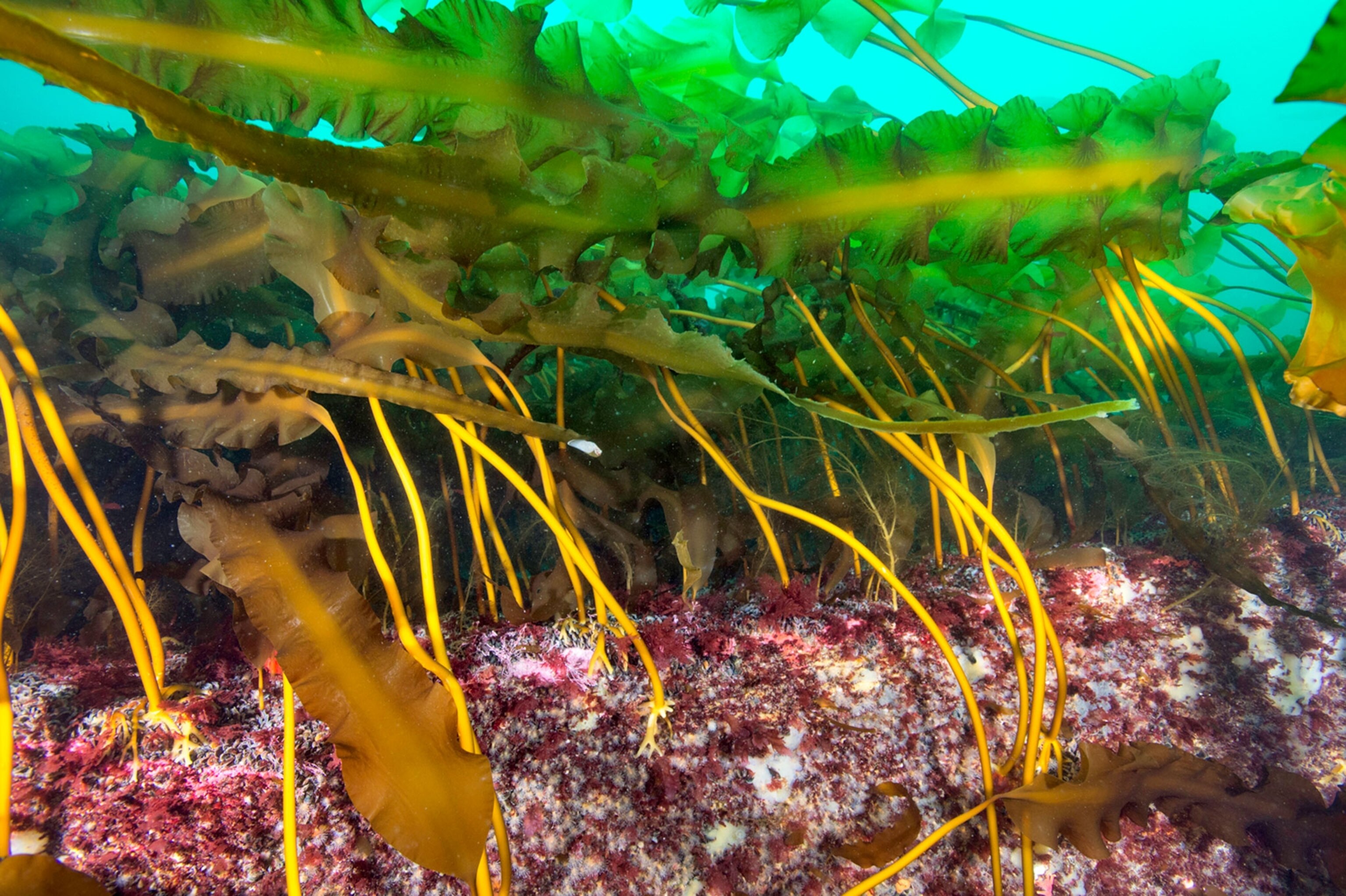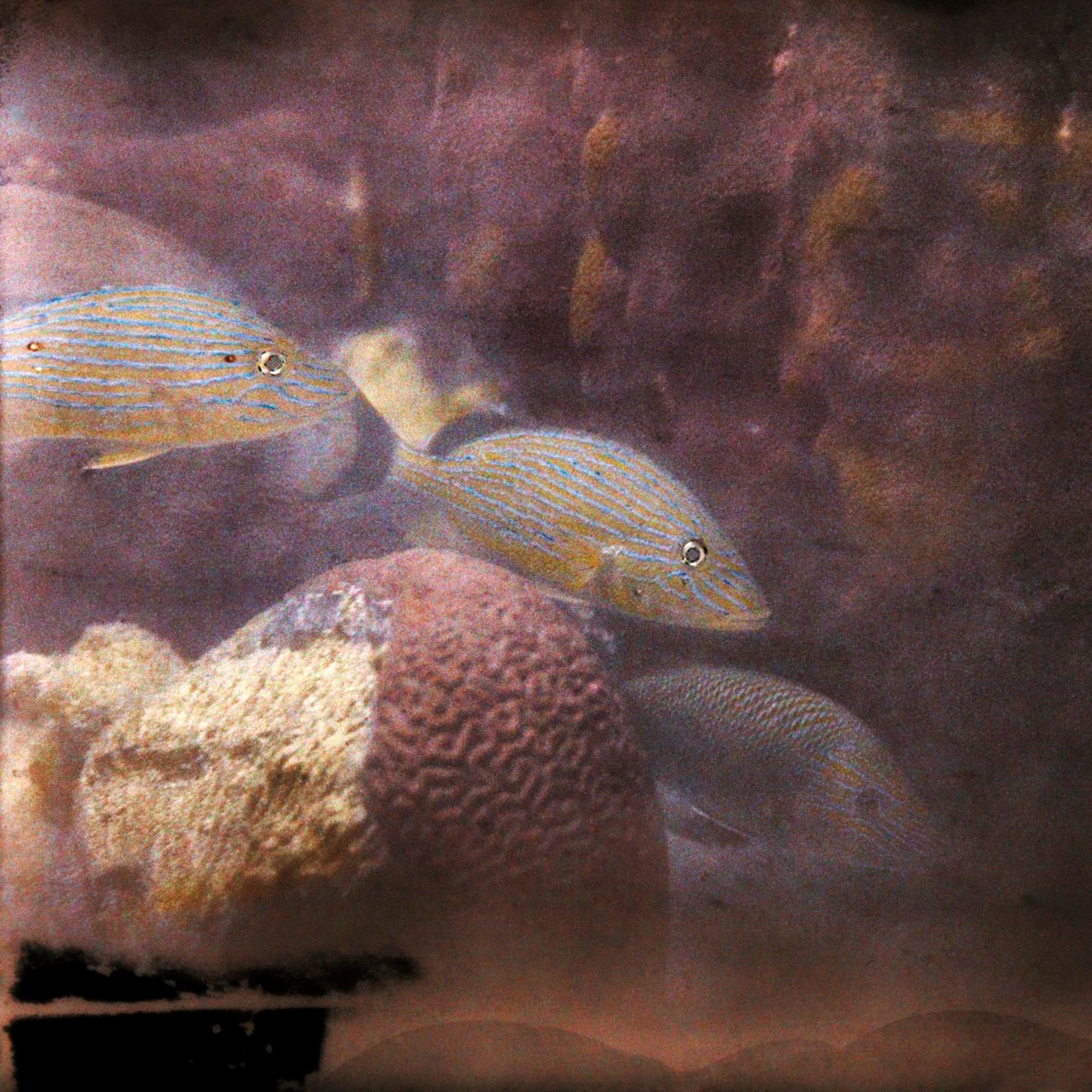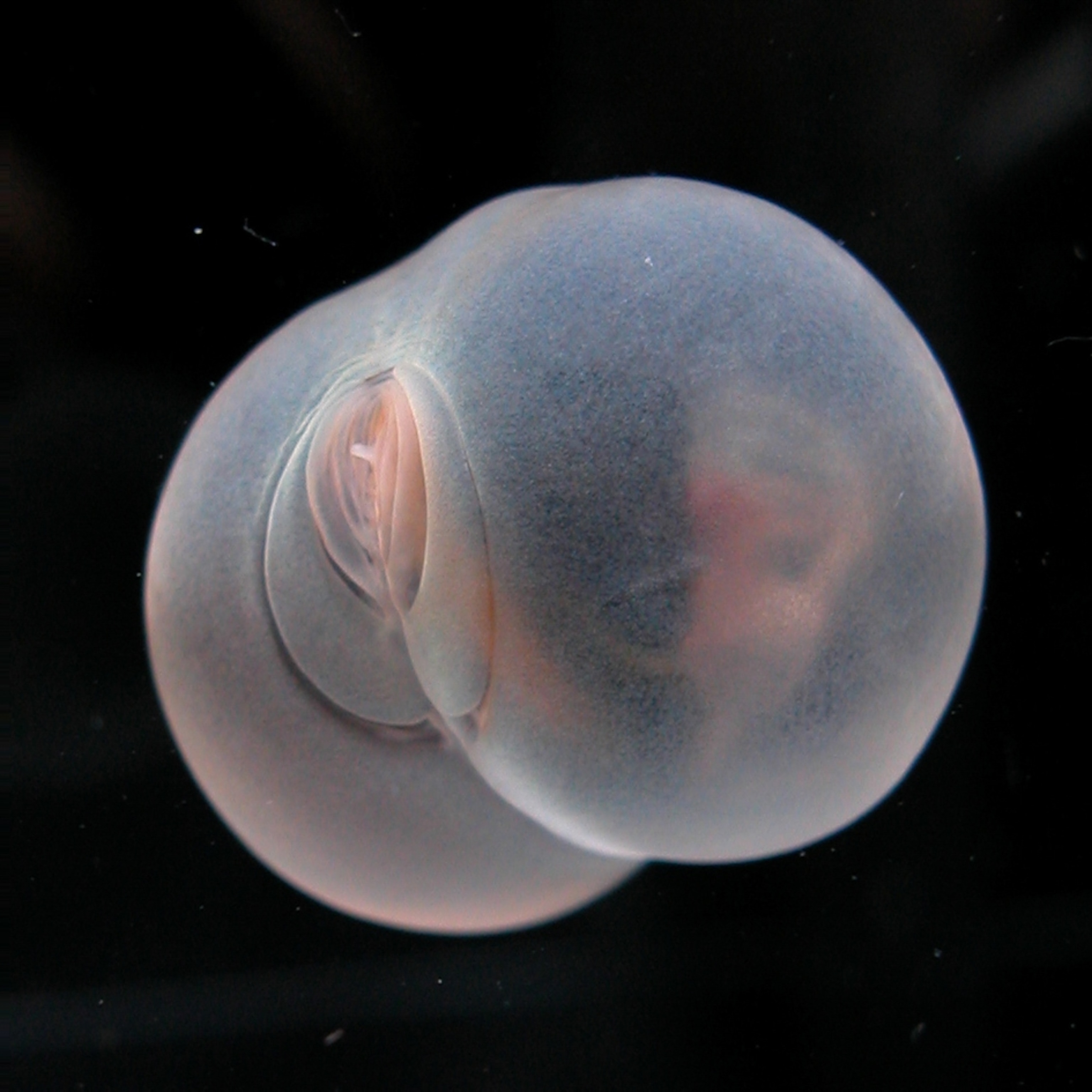See What Could Be the Atlantic's First Marine Monument
Cold New England waters that host unique species need protection from fishing, conservationists say, although the industry is pushing back.
A coalition of scientists and environmental groups has asked the Obama administration to designate the first national marine monument in the Atlantic Ocean. The campaign is backed up by a study released Tuesday showing that the cold waters off New England are home to rich biodiversity and are in need of permanent protection.
The fishing industry and Maine's governor are opposing the proposal. Conservationists appeared to receive a setback last week when an Obama administration official seemed to suggest to industry representatives that the monument is no longer being considered, but environmentalists say those comments were premature and that they still have time to make the case before the next president takes office. The Obama administration has not yet responded to our request for comment.
The centerpiece of the proposal is an area called Cashes Ledge, which lies about 80 miles (130 kilometers) off the coast of Massachussetts in the Gulf of Maine. It’s an underwater mountain range that juts up as high as 20 feet (6 meters) below the water’s surface, in an area roughly half the size of Rhode Island. The region is home to rich kelp forests and serves as habitat for endangered North Atlantic right whales.
Also proposed for monument status are a series of deepwater seamounts and canyons in Georges Bank, about 150 miles (240 kilometers) southeast of Cape Cod.
"Cashes Ledge is the Yellowstone of the North Atlantic, an amazing gathering of fish and other wildlife known only to fishermen until recent years when divers and scientists have explored and documented the rich biodiversity of this glorious, golden forest," says marine scientist Sylvia Earle, a National Geographic Explorer-in-Residence.
Earle is part of the coalition requesting federal protection for the area and is joined by the Pew Charitable Trusts, the National Wildlife Federation, the New England Aquarium, and other groups.
New research by scientists from the New England Aquarium shows the areas are "vital refuges for a wide range of ocean wildlife and their crucial habitats," says Nigella Hillgarth, president and CEO of the aquarium.
Protecting a Web of Life?
The proposed new monument would protect nursery areas that are home to large numbers of fish and invertebrates, says Jon D. Witman, a professor of biology at Brown University who has spent years studying the region.
Those animals, in turn, attract a host of seabirds and marine mammals, such as the endangered North Atlantic right whale. The shallow water over Cashes Ledge allows the growth of a vast kelp forest, the largest off the U.S. Atlantic coast.
“Like a coral reef, the kelp forest is tremendous 3-D habitat for fish and invertebrates,” says Witman. “It’s an oasis of life surrounded by much less productivity in the open ocean.”
That life includes giant schools of bluefin tuna, herring, and an estimated 500 times more cod per unit area than the rest of the East coast, according to Witman’s studies.
The Georges Bank seamounts rise thousands of feet from the ocean floor and are home to large numbers of deep-sea corals and sponges, many of which are unknown to science. The slow-growing animals are thought to live for more than a hundred years.
Some can grow as large as trees and resemble “a veritable Dr. Seuss garden,” says Peter Auster, a scientist with the University of Connecticut and the Mystic Aquarium who has studied them for 30 years.
The canyons of Georges Bank attract swordfish and other predators who try to pick off the rich array of fish, crabs, and other organisms that live in the underwater cliffs. Some of the rock is so excavated out by all the living creatures that scientists call them “pueblo communities.”
The wildlife population densities around these areas “are like a time machine to the New England of 400 years ago,” says Witman, before the onset of industrial pollution and overfishing.
And yet despite their relative remoteness, in recent decades they have faced increased pressure from fishermen looking for swordfish, squid, herring, tuna, and other species. If the fishing threat isn’t permanently curtailed by the monument designation it could eventually decimate the wildlife that makes the areas so unique, Witman says.
It is also important to protect the areas permanently from mining and oil drilling, says Witman, because as technology improves there’s a chance those areas could be targeted. Deep-sea corals are particularly sensitive to any disturbances by such activities, Auster notes.
Fish Recovery
National Geographic photographer Brian Skerry says he was “blown away” by what he saw on recent dives on Cashes Ledge. “I saw big schools of pollack and cod, reminiscent of what I had seen in the 1970s off New England,” he says.
Those fish have received some protection at Cashes Ledge since 1999, when the regional New England Fishery Management Council began to restrict bottom-trawling in the area, in order to allow fish to recover after preceding years of harvesting. Cod have rebounded strongly over the past few years, but monument status would ensure those population gains won’t be reversed by future fisheries decisions, says Witman.
The New England fishery council has expressed opposition to the creation of the monument, as has Maine’s Governor Paul LePage, who argued that the monument would hurt fishermen by restricting their access. These opponents say the areas currently enjoy enough protection from fishing to keep them healthy and they don't relish the idea of a permanent loss of access.
But Witman says the monument would be a “win win,” because some of the fish that develop there in the protected nursery would wander outside of the boundaries of the reserve, where they can be legally caught. “It would have a healthy impact on the ocean ecosystem,” says Witman, who adds that the monument would be a boon to dive companies, whale watching tours, and other ecotourism operators.
Auster adds that the monument would give ocean wildlife a better chance to respond to a changing climate, because it would free the area from the possible pressures of extraction. A new monument would "provide permanent protection to these vulnerable communities,” he says.

